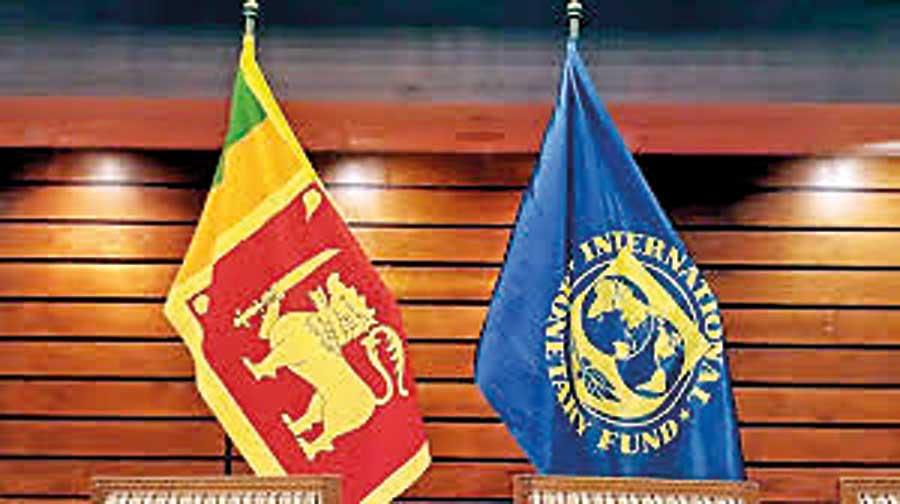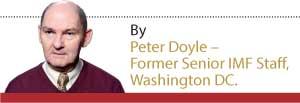Reply To:
Name - Reply Comment

Perhaps there is some merit to IMF claims that this indicates that the program “is beginning to work”

Between 1990 and 2019, real income per capita (per person) in Sri Lanka quintupled, a world-leading astonishing success. Alongside, most social indicators improved, many dramatically. For much of that time, including to 2019, it operated under IMF programs. So given the growth in incomes, that collaboration must overall be judged to have been a spectacular success.
And for almost all of that time, and contrary to some prominent narratives, fiscal policy was kept within narrow limits. In particular, Sri Lanka’s government kept its primary balance that is revenue less non-interest spending largely within the bounds corresponding to those delivered by countries in Sri Lanka’s income-per-capita neighbourhood which achieved the highest per capita growth.
In short, on this pivotal fiscal metric, Sri Lanka mimicked the best by keeping its primary balance between a deficit of 2% of the GDP (Gross Domestic Product) and a surplus of 0.2% of the GDP. And so it got the best.
That does not mean that everything went right, some investments failed, some disparities rose. Nor that even better results were impossible, nor that there were and are not more to be done. But when the core policy is right, other errors do less damage.
All change from 2020
The macroeconomic or large scale crisis of 2020 and thereafter changed all that. Partly, but only partly, with Covid19; tax and expenditure initiatives took the primary deficit (shortage) far below that best-practice range, averaging a 5% deficit of the GDP for 2020-22.
Most lenders, understandably, balked. But still a number continued financing, without which those disastrous fiscal excesses would have been impossible. Inflation soared, severe shortages emerged, and by 2022, the real GDP had fallen by almost 10% from its 2018 peak. Then, in 2023, the IMF cavalry arrived, once again.
Help for whom?
I recently reviewed this episode and the policy framework then proposed/imposed by the IMF for a webinar1/ hosted by YUKTHI, a collective of Sri Lankan economists and activists newly organizing to critique policies, and IDEAs; an international organization of academic economists largely from the Global South doing similarly to that the global level.
My core concern expressed is that, whereas over recent decades the IMF supported Sri Lanka productively, by insisting that it kept its primary fiscal balance within modest bounds, which turned out congruent with best practice, this time it is very different.
This time, the IMF program initiated in 2023 is anchored by a target for Sri Lanka for its medium-term primary balance of a surplus of 2.3% of the GDP. That is over 3 percentage points of the GDP above average established best practice for countries in Sri Lanka’s GDP per capita neighbourhood, and above Sri Lanka’s own recipe proven over 30 years.
The apparent reason for this deviation from best practice is the IMF’s insistence that Sri Lanka, regardless of the recklessness of its creditors, pays its debts, or most of them.
Debt restructuring negotiations long ongoing are predicated on this IMF number, under which Sri Lanka will tighten its belt to deprivation to squeeze resources to creditors. As that still does not secure full payment, creditors must write off the modest remainder.
But because that target number and associated deprivation deviates from best practice, it will impair Sri Lanka’s ability to grow to potential, regardless other IMF-imposed reforms alongside, ranging from revenue increases, privatizations, and inflation stabilization, to a bonfire of price controls. So, it implies a sacrifice by Sri Lanka, and a burdensome one, austerity and social suffering for the creditors’ benefit.
Target out of a clear blue sky
How did the IMF determine that this number, this allocation of pain between borrower and lenders, this explicit deviation from best practice largely to the benefit of Sri Lanka’s creditors, was the “right” number? It has never explained. It set the number by fiat and presented it to Sri Lanka as a “fait accompli’ – something that already happened or has already been decided before those affected even hear about it, leaving them with no option but to accept.
It could have set a lower target number, even one within the global best practice and Sri Lanka’s prior range; thereby, restoring the possibility of growing again at full potential by demanding greater write offs from creditors, but no.
And the issue is worse still. As Sharmini Coorey, economic advisor to the Government, has acknowledged, even if everything “goes to plan”, that target if delivered will still leave Sri Lanka with public debt similar to its GDP. So, further rounds of negotiations with creditors for more write offs will be all-but-inevitable. And that is if everything “goes to plan”.
Troubled prospects
Sri Lanka, rather than being set for resumption of growth at potential, is being set up for internal tensions and repeated acrimonious rounds of negotiations with creditors.
Since the program began, the economy has lifted off the bottom. No surprise; economies do not stay at bottom forever, IMF program or no. Nevertheless, perhaps there is some merit to IMF claims that this indicates that the program “is beginning to work”. And accordingly, they stress that all efforts should therefore be devoted to keeping that going even (perhaps especially) through the imminent election.
But the target of a primary surplus of 2.3%, by far exceeding best practice, sets a binding cap on the growth that Sri Lanka can achieve over the medium term. That undermines the very reform efforts being so earnestly encouraged and directly contradicts IMF staff assertions that the program is “ambitious”.
Given that number, growth at potential and the long-standing and highly successful collaboration between the IMF and Sri Lanka are no longer in view. No amount of bolstering or finger-pointing or blaming others, be that by IMF staff or IMF-friendly government officials, can change or justify that.
Link to the webinar hosted by YUKTHI - https://youtu.be/i2I1olafLS0?si=pke5iaHuPDqYMdPY